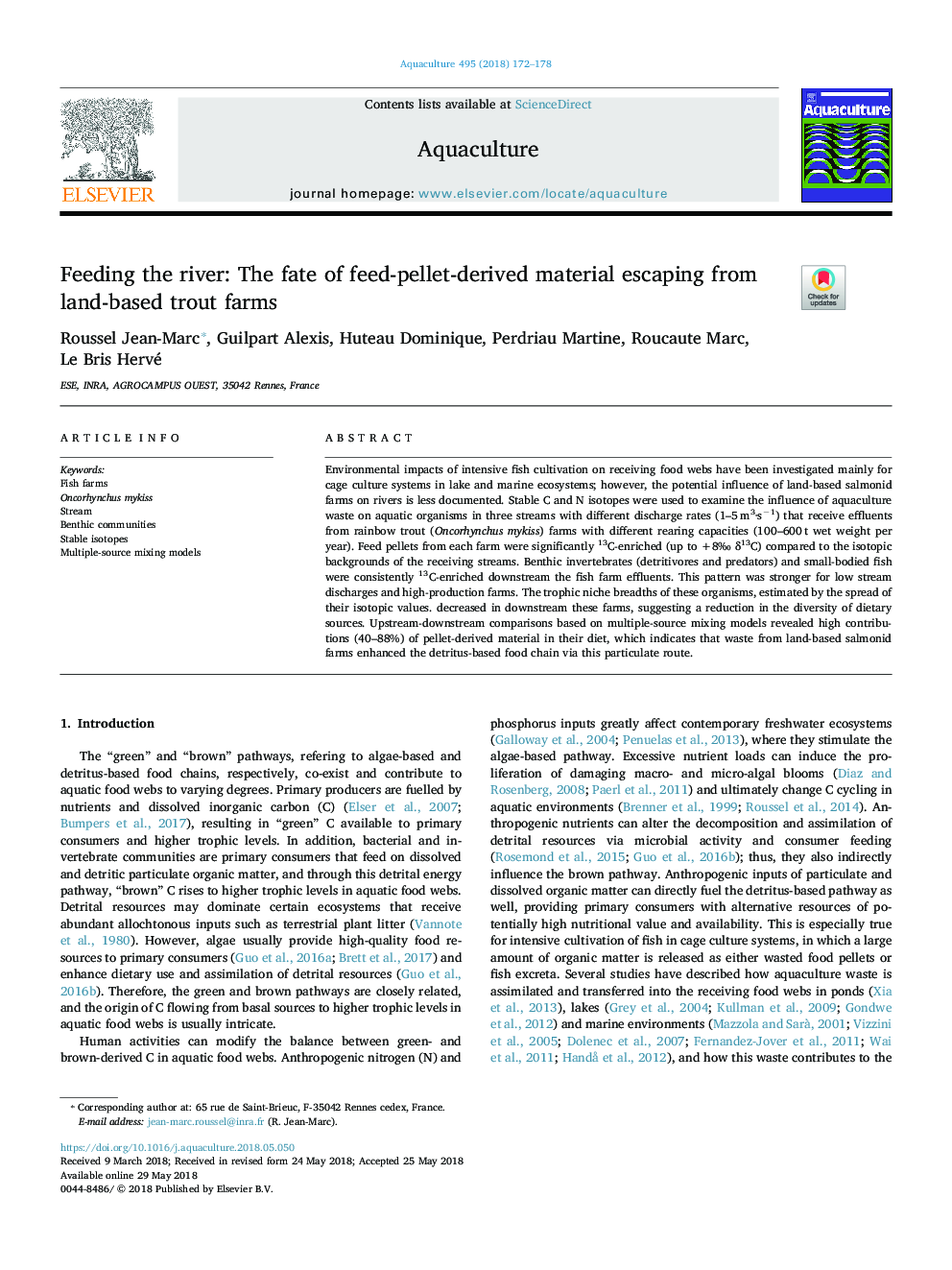| Article ID | Journal | Published Year | Pages | File Type |
|---|---|---|---|---|
| 8493097 | Aquaculture | 2018 | 7 Pages |
Abstract
Environmental impacts of intensive fish cultivation on receiving food webs have been investigated mainly for cage culture systems in lake and marine ecosystems; however, the potential influence of land-based salmonid farms on rivers is less documented. Stable C and N isotopes were used to examine the influence of aquaculture waste on aquatic organisms in three streams with different discharge rates (1-5â¯m3·sâ1) that receive effluents from rainbow trout (Oncorhynchus mykiss) farms with different rearing capacities (100-600â¯t wet weight per year). Feed pellets from each farm were significantly 13C-enriched (up to +8Ⱐδ13C) compared to the isotopic backgrounds of the receiving streams. Benthic invertebrates (detritivores and predators) and small-bodied fish were consistently 13C-enriched downstream the fish farm effluents. This pattern was stronger for low stream discharges and high-production farms. The trophic niche breadths of these organisms, estimated by the spread of their isotopic values. decreased in downstream these farms, suggesting a reduction in the diversity of dietary sources. Upstream-downstream comparisons based on multiple-source mixing models revealed high contributions (40-88%) of pellet-derived material in their diet, which indicates that waste from land-based salmonid farms enhanced the detritus-based food chain via this particulate route.
Related Topics
Life Sciences
Agricultural and Biological Sciences
Aquatic Science
Authors
Roussel Jean-Marc, Guilpart Alexis, Huteau Dominique, Perdriau Martine, Roucaute Marc, Le Bris Hervé,
